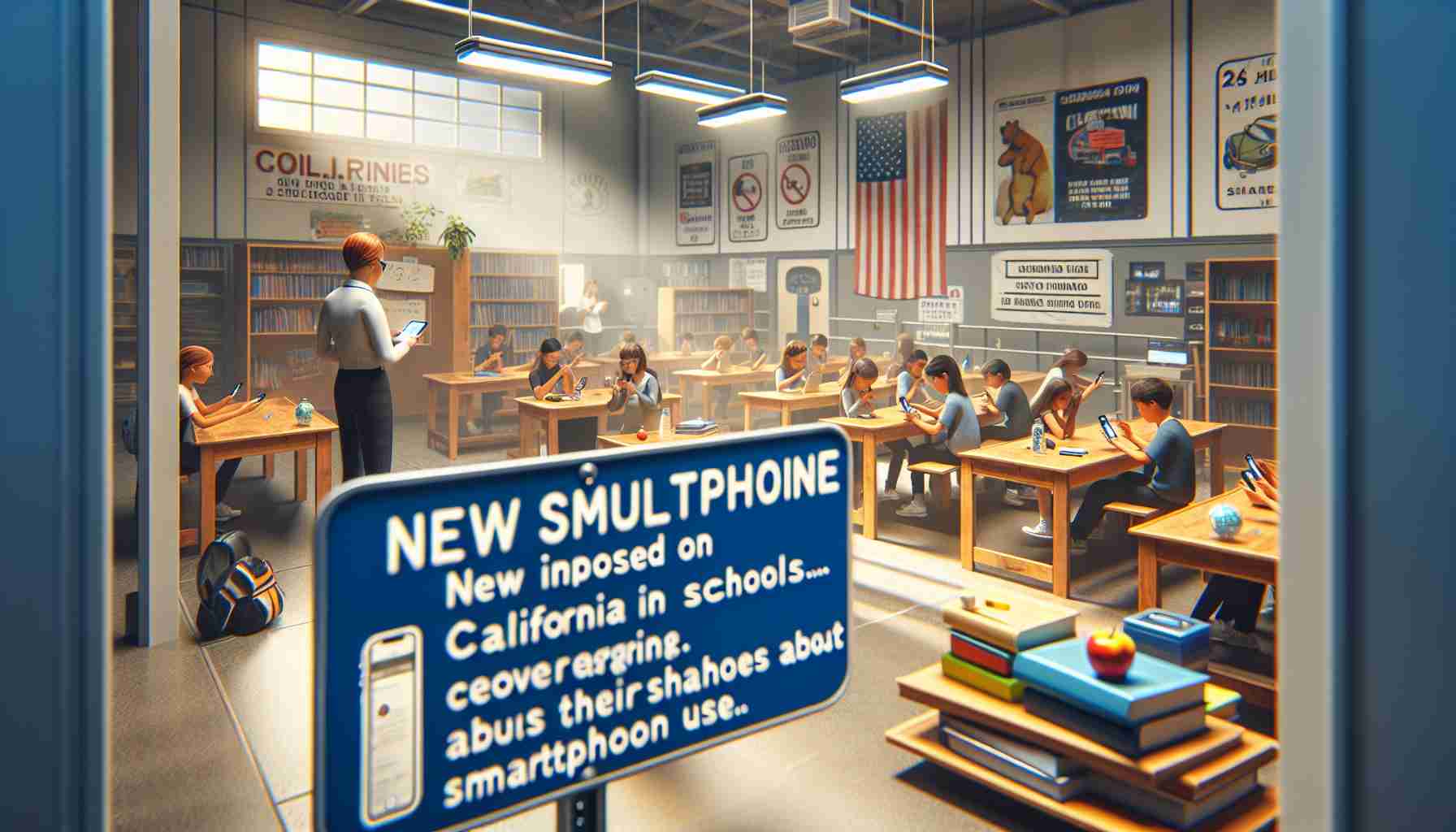In a significant move to enhance student well-being and academic performance, California has enacted a new law mandating schools to limit or outright ban smartphone usage within their premises. Signed by Governor Gavin Newsom, this legislation necessitates the development of a regulatory framework by schools by July 1, 2026, with updates occurring every five years.
The law emphasizes the growing concerns surrounding the unregulated use of smartphones in educational settings. Evidence suggests that such unrestricted access can hinder learning objectives, negatively impact student performance—especially among those who struggle academically—foster incidents of cyberbullying, and exacerbate mental health issues, including anxiety and depression.
In his advocacy for the bill, Governor Newsom highlighted the correlation between excessive smartphone usage and mental health challenges. He believes that this initiative will encourage students to redirect their attention toward their studies and social connections rather than their devices during school hours.
While students may still access their phones in emergencies or for specific health-related reasons with appropriate permissions, the overarching goal is to cultivate a focused educational environment.
Other states, like Virginia, are observing California’s approach, with plans to implement similar restrictions in the near future, reflecting a broader movement towards enhancing educational quality and student health.
Maximizing Educational Focus: Tips and Facts on Smartphone Use in Schools
As California implements new regulations on smartphone usage in schools, students, educators, and parents can benefit from understanding how to navigate this changing landscape effectively. Here are some practical tips and interesting facts that can enhance learning experiences, as well as help maintain a healthy balance between technology use and academic performance.
1. Embrace Digital Detox Zones: Schools are creating areas where the use of smartphones is limited or prohibited. Students can take this opportunity to engage in activities that foster creativity and social interaction. Consider establishing similar zones at home, like during meal times or study periods, to encourage family bonding and focused learning.
2. Mindful Technology Use: Encourage students to practice mindfulness with their smartphone use. Setting specific times for checking social media or playing games can help minimize distractions. Using apps that track screen time can also aid in developing healthier habits.
3. Prioritize Face-to-Face Communication: With smartphones likely becoming less accessible during school hours, students can cultivate stronger interpersonal skills through face-to-face interactions. This shift can foster valuable communication abilities that are essential in both personal and professional realms.
4. Explore Educational Alternatives: Schools are likely to promote the use of tablets or computers as replacements for smartphones. Take advantage of educational apps and online resources that can supplement learning in relevant subjects. Websites such as Khan Academy offer free resources for various subjects, making learning more engaging.
5. Stay Updated on Regulations: As California’s law unfolds, staying informed about regulations can empower students and parents. Understanding guidelines not only prepares students for new school policies but also encourages proactive discussions about responsible technology use. Information can be accessed through reliable platforms like California Department of Education.
6. Foster Healthy Digital Relationships: Encourage discussions about cyberbullying and the impact of social media on mental health. Teaching students to recognize unhealthy online interactions can foster a supportive school environment. Resources available on platforms like StopBullying.gov can be beneficial.
7. Emphasize Time Management Skills: With diminished smartphone use, students have an opportunity to improve their time management skills. Encourage the use of planners or goal-setting techniques that can help organize schoolwork, assignments, and deadlines effectively.
8. Reflect on the Benefits: Studies have shown that reducing smartphone distractions can enhance attention span and academic performance. Students can reflect on their learning experiences during and after school without the constant pull of notifications, leading to a more focused approach to education.
By adjusting to these new regulations in California, students can not only improve their academic performance but also cultivate healthier habits that will benefit them long after they leave school. Embracing this change can lead to a more connected, engaged, and supportive school atmosphere.























